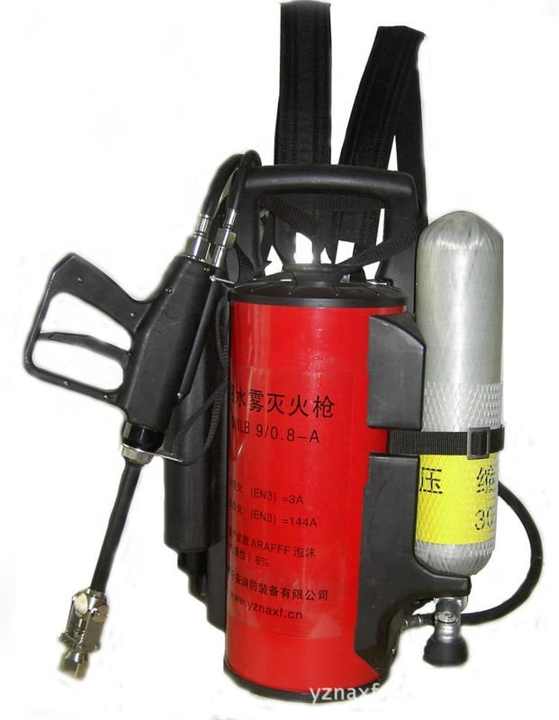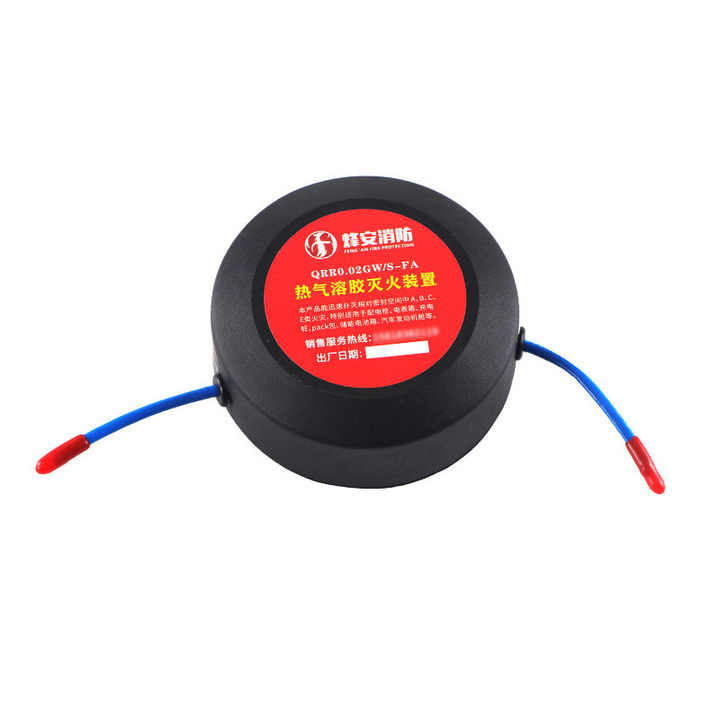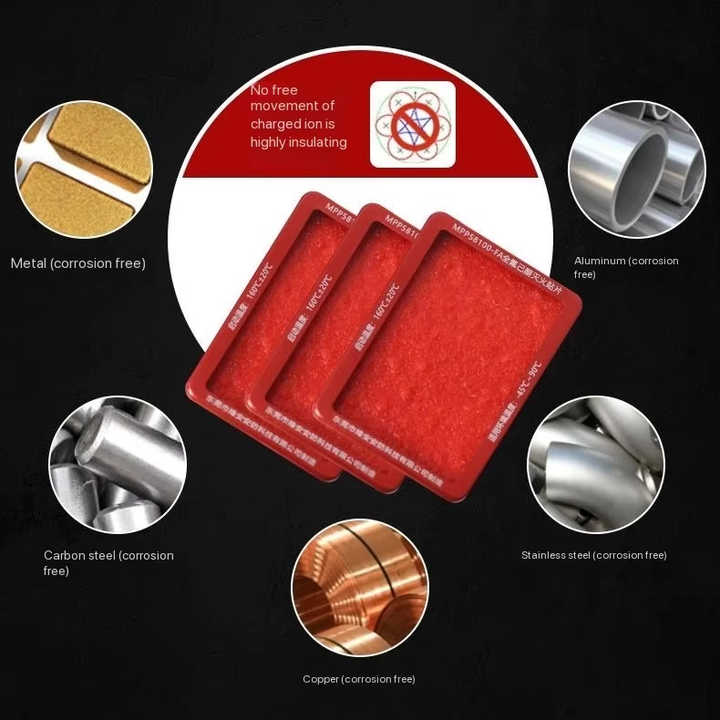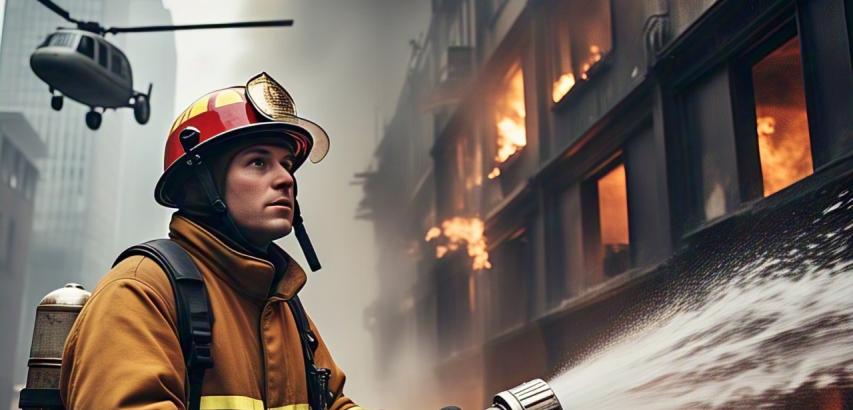Bernoulli's principle states that as the speed of a fluid (like air or water) increases, its pressure decreases. This inverse relationship between velocity and pressure is fundamental to several critical firefighting techniques used to control airflow, improve ventilation, and manipulate fire streams.
Key Applications in Firefighting:
Positive Pressure Ventilation (PPV):
Principle: High-velocity air blown from a PPV fan lowers the air pressure immediately in front of the fan nozzle. This creates a pressure differential.
Action: Higher-pressure air from behind the fan (and potentially from openings behind the fire) is drawn towards this low-pressure zone.
Effect: Controlled airflow is created through the structure, pushing heat, smoke, and toxic gases out of an exit point (e.g., an opened window or roof vent) strategically placed downstream of the fire. This "clears the path" for firefighters and victims, reduces heat, and improves visibility.
Negative Pressure Ventilation (NPV - Exhaust Fans):
Principle: An exhaust fan placed in a window or door increases the velocity of air/smoke being pulled out of the structure. According to Bernoulli, this high-velocity exhaust flow creates a zone of lower pressure inside the opening.
Action: Higher-pressure air from inside the structure (and potentially fresh air from inlet openings) flows towards this low-pressure exhaust point.
Effect: Smoke and heat are actively pulled out of the structure. NPV is often less efficient than PPV for creating flow through deep structures but is useful in specific scenarios.
Fog Stream Nozzle Operation & Gas Cooling:
Principle: As water is forced through the small orifice of a fog nozzle, its velocity increases dramatically. This high-velocity water stream creates a zone of lower pressure around it (Bernoulli).
Action: The surrounding hot gases and steam are entrained (sucked) into the low-pressure zone of the fog stream.
Effect:
Mixing: Hot gases mix intimately with the water droplets.
Cooling: Heat energy transfers rapidly from the gas to the water droplets, cooling the gases below their ignition temperature, reducing thermal radiation, and preventing flashover.
Steam Conversion: Efficient heat absorption maximizes steam production, which further displaces oxygen and helps smother the fire.
Understanding Fire Behavior & Wind Effects:
Principle: Wind blowing across an opening (window, door, breach) increases air velocity over the opening. Bernoulli dictates this creates a zone of lower pressure above/outside the opening.
Action: Higher-pressure air/smoke inside the structure flows outwards towards this low-pressure zone.
Effect: This dramatically increases airflow into the fire on the upwind side (feeding it oxygen) and intensifies flames and heat release. It's a primary factor in rapid fire spread during windy conditions and why ventilation tactics must account for wind direction. This is also the principle behind backdraft potential when oxygen is suddenly introduced to a superheated, oxygen-depleted space.
Water Curtains (Limited Application):
Principle: A high-velocity sheet of water (fog pattern) creates a low-pressure zone.
Action: This can theoretically deflect radiant heat or slightly influence the movement of hot gases or smoke away from an exposure or an escape path.
Effect: While the Coanda effect (tendency of a fluid to follow a surface) is often more dominant here, Bernoulli contributes to the initial entrainment and directionality of the water curtain.
Tactical Implications for Firefighters
Ventilation Control is Crucial: Understanding Bernoulli emphasizes that every opening affects pressure and airflow. Uncontrolled openings can dangerously feed a fire (wind-driven) or disrupt planned ventilation (PPV). Firefighters must coordinate attack, ventilation, and entry.
PPV Placement is Strategic: The PPV fan must be positioned to blow air into the desired inlet, creating flow towards and out the designated exit. Placing it too close to the inlet or misaligning it reduces effectiveness.
Nozzle Technique Matters: Effective gas cooling requires directing the fog stream into the hot gas layer overhead, maximizing entrainment and mixing. Simply spraying water at flames is less efficient.
Respect Wind Direction: Wind dramatically alters interior fire behavior via Bernoulli. Attack should ideally be made from the upwind side, and ventilation openings must be managed relative to wind.
Beware of Unintended Effects: Opening a door or window creates a new airflow path governed by pressure differentials. This can suddenly intensify a fire (wind-driven) or trigger a backdraft if done without caution in an oxygen-starved, superheated environment.
Limitations & Considerations
Real Fluids are Complex: Air and smoke are not ideal fluids. Temperature differences (buoyancy), turbulence, and multiple openings create complex interactions beyond simple Bernoulli calculations.
Thermal Buoyancy is Dominant Vertically: The heat-driven "stack effect" (hot gases rise) is often the strongest vertical airflow driver in a fire, though Bernoulli significantly influences horizontal flows, especially near openings.
PPV vs. Natural Ventilation: PPV actively creates pressure differentials using mechanical force (the fan), harnessing Bernoulli to control the direction of the flow it generates. Natural ventilation relies solely on existing pressure differences (temperature/wind).
Fog Stream Penetration: While great for gas cooling, the entrainment effect of a fog stream can sometimes push fire away from direct water application on solid fuels. Smooth-bore nozzles or combination nozzles on straight stream offer better penetration for direct fire attack on deep-seated fuels.
Bernoulli's principle isn't just abstract physics; it's an essential tool in the firefighter's mental toolbox. By understanding how velocity changes affect pressure, firefighters can:
Predict and Control Airflow: Strategically ventilate structures using PPV/NPV.
Effectively Cool Hazardous Gases: Use fog streams to prevent flashover.
Anticipate Dangerous Fire Behavior: Understand how wind and openings influence fire intensity and spread.
Operate More Safely and Effectively: Make informed decisions about entry points, attack lines, and ventilation tactics.
Mastering the application of Bernoulli's principle allows firefighters to work with physics to control the fire environment, enhance victim survivability, and protect themselves and property.
Remember: While Bernoulli explains the mechanism for airflow changes in these tactics, fireground success depends on proper training, coordination, and understanding the complex interaction of all fire dynamics principles (heat transfer, fluid dynamics, chemistry).
 |  |  |
Buy Fire Extinguisher - Amazon
 |  |  |
